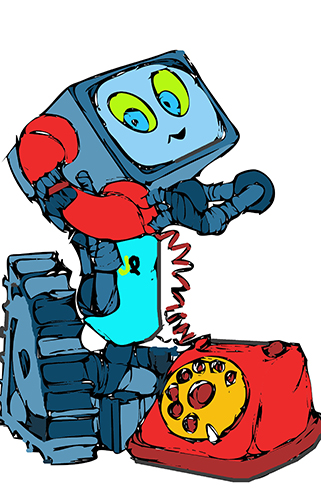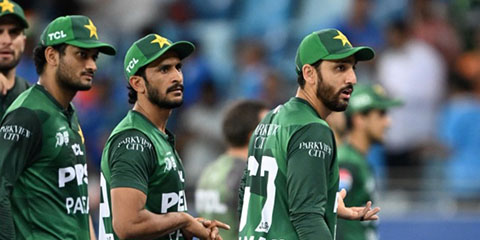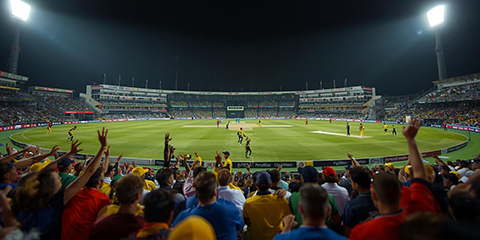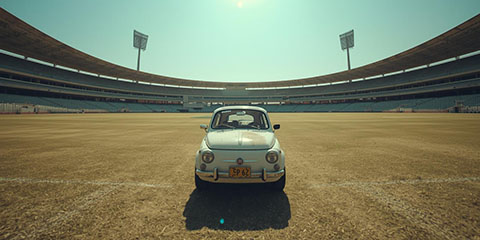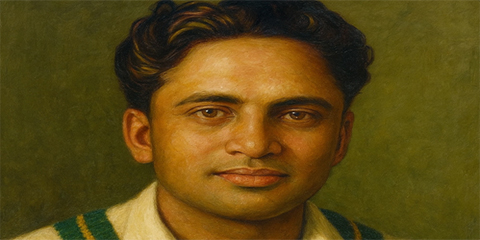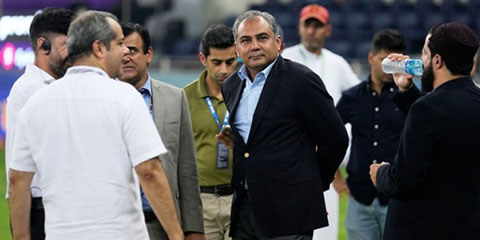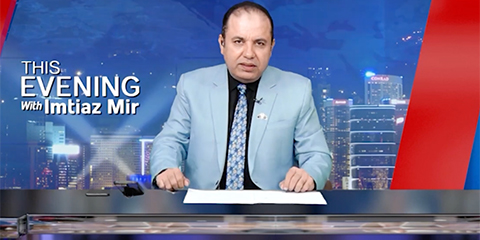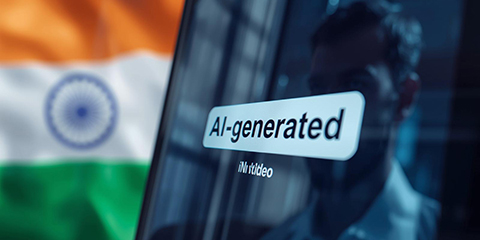From handshake snub to ICC charges: Pakistan cricket's biggest scandal explained
JournalismPakistan.com |
Published last month | Dr. Nauman Niaz (TI)
Join our WhatsApp channel
The September 14th Cricket Controversy That Started It All
It is fast becoming evident, indeed painfully so, that in the wake of the sorry spectacle of September 14th, 2025, when the Indian players refused even the courtesy of shaking hands with the Pakistan captain, and thereby with the team entire during the Asia Cup match, Pakistan's cricket stands not only slighted but likely to stand embarrassed in the public theatre. And here, at the heart of this ignominy, sits the figure of the PCB's Chairman, Mr. Mohsin Raza Naqvi: at once the Chair of the Asian Cricket Council, the anointed face of the Government of Pakistan, and the Federal Minister for Interior and Narcotics Control. Yet, for all this assemblage of titles and grand designations, he appears a man betrayed by counsel, misled, misguided, ensnared by the suggestions of advisors, seemingly whose vision is myopic, whose instincts are blind to the dignity of a nation's game.
Chairman Naqvi's Leadership Under Scrutiny
He must awaken to the truth, as the events and their aftermath delineate, that he has been nudged, if not hurled, into waters dark and restless, cast adrift by the very hands that should have steadied his course. Was it through negligence, the sloth of unprepared minds? Was it incompetence, that dreary enemy of clarity? Or was it, more damning still, mischief premeditated, deliberate treachery masquerading as counsel? Whatever the cause, the consequence now looms: a man soon to be embattled, his figure outlined against a storm not of his own making, yet his to endure.
And what remedy remains? Not the platitudes of courtiers, nor the bluster of ill-informed confidants, but counsel wrought in steel and wisdom, high-tier, unsparing, legal guidance, the kind that cleaves ambiguity like a cutlass through fog. For without it, each next step he takes in the shifting quagmire of the PCB-ICC saga will be but another stumble deeper into quicksand. There is no time for improvisation, no stage for provincial blunderers. The hour demands discipline, foresight, and the armour of intellect; else the man, once upright, will be seen only as a silhouette, buffeted, diminished, swallowed by the very surge his advisors assured him he could master, so it seems.
Pakistan Cricket's Institutional Crisis
One is struck by the dissonance: Pakistan, a country where cricket is not just a sport but a national scripture, is left with its custodians fumbling with the chalice. In literary cadence, we might say: the music has been hushed, the bow broken upon the strings, not by the rival's stroke but by the conductor's own inept hand. What ought to have been rebuke and reprisal has instead been permitted to pass as if it were a trifling discourtesy, and in so doing, the Chairman, wrapped in the ceremonials of office, has rendered the national side exposed, like cricketers sent to the crease barehanded, without bat, without guard.
There is, behind it all, the faint odour of mismanagement dressed in official robes: the tragedy of a leader entrapped by ill-starred advice. One would call it the theatre of cricket reduced to pantomime, where the actors forget their lines and the chorus sings off-key. For here is not just a failure of protocol but of imagination, of guardianship, of pride. In this dereliction lies the true calamity that Pakistan's honour in cricket, like its cover drive in the afternoon sun, has been played and missed, its edge caught by the hands of recklessness and imprudence.
The ICC Protocol Violations That Changed Everything
What unfolded on September 14th carries the flavour of irony sharpened into farce. Cricket's most credible narrative yesterday declared that the ICC had taken grave exception to the PCB's decision to place on record, by video no less, the conclave between match referee Andy Pycroft and Pakistan's team management in the hours before their Asia Cup encounter with the UAE on September 17th in Dubai.
It was solemnly conveyed in the report that, on Thursday, a strongly-worded missive was dispatched: ICC CEO Sanjog Gupta, according to the Press Trust of India, admonished the PCB that the act of filming with a mobile phone was an infraction of protocol in the sanctified precincts of the Players and Match Officials Area (PMOA), wherein the meeting was held. At that table sat Pycroft, Pakistan captain Salman Agha, Head Coach Mike Hesson, Manager Naveed Akram Cheema, and Media Manager Naeem Gillani. Even Wasim Khan, ICC's own General Manager of Cricket, was present.
When Gillani attempted to draw his device and capture the session, he was reminded, firmly, by the letter of the anti-corruption code that mobile phones had no place within the PMOA. Yet the PCB, stubborn in its resolve, pressed its demand: Pakistan would not take the field against the UAE without the assurance of a recording. Thus, an awkward compromise was wrought. Gillani was permitted to film the gathering, though stripped of its audio, a silent tableau of mistrust and defiance.
ICC Code of Conduct Regulations Under Question
Here, the irony sharpens. If Gillani was indeed allowed, then the subsequent email from the ICC CEO appears redundant, a piece of bureaucratic needlework on an already closed affair. But if Gupta still felt compelled to send it, then surely it signalled something more sinister stirring in the background, something far from cosmetic. One wonders. Yet in the spirit of generosity, one strains to extend to the PCB the courtesy of benefit, though the mind recoils against its own indulgence. The ICC Code of Conduct is clear as daylight, its clauses written in ink indelible.
And here, in this waltz of protocols and provocations, cricket once again becomes theatre, part burlesque, part tragedy, its administrators fumbling in the wings while the grand old stage grows restless for a nobler script.
ICC Recording Equipment Regulations:
|
Clause No.
|
Regulation
|
Key Restriction
|
|
2.2.11
|
Ensure that there are no fixed or temporary video cameras or other recording equipment set up within any dressing room or adjoining medical or similar room accessed from the dressing room, used by the teams or Match Officials, for the purpose of broadcasting video or audio footage therefrom.
|
No recording or broadcasting equipment allowed in dressing rooms or adjoining areas.
|
Recording Safeguards Required:
|
Safeguard
|
Requirement
|
|
(a)
|
Any intention to include such a camera must be communicated reasonably in advance to the ICC's Anti-Corruption Manager.
|
|
(b)
|
The camera must be static, wall-mounted, and have its audio-recording capability disabled.
|
|
(c)
|
The ICC's Anti-Corruption Manager must be advised of the proposed time for installation, and may be present if deemed necessary.
|
|
(d)
|
The lens cap on the camera must be securely locked at all times, with the designated team media manager being the only person authorized to remove it.
|
|
(e)
|
The camera can only record for the period during which the lens cap is removed, and for a maximum of two minutes.
|
|
(f)
|
The ICC's Anti-Corruption Manager must be advised of the proposed time for removal of the lens cap, which can only be prior to a team taking the field for any of its batting or fielding innings, and must be present then.
|
Three Major Violations Lead to Disciplinary Action
A report published in the Economic Times on September 20th, 2025, has left one in a state of sombre perplexity; indeed, my apprehensions stand, alas, half-confirmed, that the Pakistan Cricket Board drifts perilously close to wreckage. The revelations are no longer undertones but proclamations: the ICC has formally written to the PCB, enumerating breaches, flagrant breaches, of regulation during the Asia Cup of 2025 in Dubai. According to the sources at the ICC, as cited by the Economic Times, disciplinary action is already poised like a guillotine: charges of misconduct, of violating media protocols, of wilful misinterpretation on the unruly theatre of social media. Should these accusations hold, they are grave, almost damning.
What began as a tale of bureaucratic insistence soon turned into something darker. It was told first that the Media Manager of the Pakistan team, compelled beyond measure, had sought permission to record; yet another account insists no such permission was granted. The Manager of the Anti-Corruption Unit, no less, had forewarned Pakistan's hierarchy that they were stepping into violation. Yet the act was carried out. Thus, what might have been oversight becomes wilful disobedience. And wilful disobedience becomes dangerous.
Sources intimate that the email from the ICC's Chief Executive bears not the mildness of regret but the bite of reprimand. The PCB, in its dramaturgy of projection, presented Andy Pycroft as though he had proffered an apology. He had not. He hardly said that he 'regretted the miscommunication'. That regret has been twisted into an apology. The ICC, instead of extending contrition, has sent something resembling a charge sheet. And in this document, three violations stand inscribed:
First Violation: Tournament Disruption First, the delay for the UAE match, described as an unnecessary escalation, a childish stubbornness, which disrupted the very proceedings of the tournament. The ICC, in truth, was within its rights to deny PCB's demand to remove the referee; postings of officials lie in its absolute domain. The most that Pakistan could properly have done was to register a complaint.
Second Violation: PMOA Rules Breach Second, the breach of PMOA Rules. The PCB insisted that Media Manager Naeem Gillani be present, a demand squarely against ICC's Playing and Media Operations Area Regulations. ICC's Anti-Corruption personnel initially barred him. Pakistan then threatened withdrawal. Thus admitted, Gillani recorded the meeting, clandestine in act, without ICC's knowledge. And instead of remaining a quiet archive, the footage was paraded on social media.
Third Violation: Misleading Social Media Campaign Third, the sin of falsehood. PCB's handling of the footage was itself a betrayal. Pycroft had offered no apology, just regret over the incident of the handshake. Yet the Board presented the video to the world as an official confession. ICC, in internal review, cleared Pycroft of all wrongdoing. They denounced PCB's portrayal as misleading.
Chairman Naqvi's Dual Role Creates Ethical Conflicts
These three breaches now lie before the ICC's disciplinary committee, awaiting its verdict. But the peril is not confined to the Board alone. The Chairman himself is drawn into the storm. He, misled or ill-advised, raised the cry of boycott in public. Here the tragedy deepens: for the Chairman, by his office, is not just a figurehead of Pakistan, but a Director upon the ICC's board, bound hand and foot to its Codes of Ethics.
The ICC's Code of Ethics for Directors speaks with an almost liturgical solemnity: 'The purpose of this Code is to guide directors in fulfilling their fiduciary duties with integrity, transparency, and accountability, while respecting applicable laws and social responsibilities.'
Article 1: Duty of Loyalty and Good Faith: • Directors must act in the best interests of company, shareholders, and stakeholders. • They must avoid any activity that conflicts with the company's interests. • They are compelled to disclose at once any conflict, actual or potential. • They must not exploit position for private gain or advantage of third parties. • Their decisions must rest upon impartiality, upon fact.
Article 2: Duty of Care and Diligence: • To act in the best interests of company and stakeholders. • To shun all conflicts of interest. • To disclose, without delay, any hint of such conflict. • To use office not for personal benefit nor to improperly favour others. • To decide impartially, factually.
The Handshake Controversy: Missed Opportunities for Justice
This, too, might yet become a spear-point, should tempers be stretched to the snapping of sinew. And what, then, of the handshake? That ancient, almost sacramental gesture of civility, reduced now to the stuff of quarrel. Pakistan, in a moment of symbolic defiance, turned away from the post-match presentation, casting accusation upon Pycroft, charging him with failing to guard the spirit of cricket. Yet here irony enters like a silent actor upon the stage. The Code of Conduct, in its clauses 2.1.1 and 2.1.2, speaks gravely of respect and the maintenance of atmosphere, but nowhere consecrates the handshake as liturgy. To refuse a hand is impolite; it is not blasphemy. Pycroft, then, stands acquitted by the letter of the law. At worst, he became a courier of one team's message when neutrality demanded his tongue remain still.
The PCB and their men had chosen the wrong battleground. Their quarrel should not have been with Pycroft's hand but with Suriyakumar Yadav's word. For in his post-match utterance he abandoned the realm of cricket and strode into politics. And that, by the ICC's own scripture—clauses 2.1.1, 2.1.2, and 2.4—was forbidden ground. Here, indeed, lay the trespass. Pakistan, however, though armed with provisions under 3.1.1, 3.1.2, and 3.1.3, let the moment drift. The lawful windows—eighteen hours, thirty-six, even ninety-six—passed by, unheeded.
Had they acted, they might have placed ICC and BCCI alike upon the rack of their own contradictions. If Yadav had spoken with permission, ICC itself would have been guilty of consuming its own commandments, a case fit for Lausanne's tribunal of last resort. If he had spoken without, he should have been summoned to bear the weight of Level 3 or Level 4 penalties, the severities reserved for offences against the very marrow of the game.
Understanding ICC Code of Conduct Penalty Levels
Level 3 Offences:
|
Section
|
Details
|
|
Definition
|
Serious violation under the ICC Code of Conduct for Players & Player Support Personnel.
|
|
Penalties
|
Ban of 2 to 4 Test matches or 4 to 8 ODIs.
|
|
Appeal Rights
|
There is a right of appeal for Levels 3 and 4.
|
|
Severity
|
More serious than Level 1 or Level 2 offences.
|
Level 3 Offence Types:
|
No.
|
Offence Description
|
|
3.1
|
Repeat of any Level 2 offence within 12 months (committing a similar offence again within a year).
|
|
3.2
|
Intimidation of an umpire or match referee, whether by language or conduct.
|
|
3.3
|
Threat of assault on another player, team official, or spectator.
|
|
3.4
|
Using language or gestures that offend, insult, humiliate, intimidate, threaten, disparage, or vilify another person on the basis of race, religion, colour, descent, or national/ethnic origin.
|
|
3.5
|
Catch-all clause: Conduct not covered elsewhere but considered contrary to the spirit of the game or bringing the game into disrepute.
|
Level 4 Offences:
|
Section
|
Details
|
|
Definition
|
The most serious misconduct violations under the ICC Code.
|
|
Penalties
|
Range from 5 Test matches or 10 ODIs up to a life ban.
|
|
Appeal Rights
|
There is a right of appeal for Level 4 offences.
|
Level 4 Offence Types:
|
No.
|
Offence Description
|
|
4.1
|
A repeat of any Level 3 offence within 12 months.
|
|
4.2
|
Threat of assault on an umpire or match referee.
|
|
4.3
|
Physical assault of another player, umpire, match referee, official, or spectator.
|
|
4.4
|
Any act of violence on the field of play.
|
|
4.5
|
Using language or gestures that seriously offend, insult, humiliate, intimidate, threaten, disparage, or vilify on the basis of race, religion, colour, descent, or national/ethnic origin.
|
The Broader Philosophy: Cricket Beyond Politics
But time slipped. The law's window closed like a shutter in the night. What might have been Pakistan's triumph of justice became instead a chronicle of missteps, of chances unclaimed, of errors compounded. And so the tale resolves itself with a cruel irony: not as plaintiff but as accused, the PCB now stands arraigned, compelled to face the echo of its own music. The resonance is merciless; the irony, tragic.
We are, each of us, patriotic, tethered to the soil that bore us, haunted by the hymns of childhood, bound to the invisible music of belonging. Yet patriotism, when unmoored and misplaced in the thespianism of sport, turns corrosive. It ceases to exalt; it corrodes. It becomes not light but shadow, an eclipse of the very spirit it pretends to honour.
What Suryiakumar Yadav and the Indian side enacted was not some trifling lapse, not just an indiscretion brushed aside with pardonable haste. It was a desecration, an abysmal profanation of cricket's immortal spirit. It gashed the game's soul, left upon its noble countenance a wound hideous and raw. To believe such theatrics might redress humiliation, might erase the annihilation of May 10th, 2025, with its bitter sequel of war, this was self-deception, an illusion born of desperation. History has already written its judgment: India stands apart, isolated, its government rebuked within its own Lok Sabha, its grand narrative hollowed and gasping; while Pakistan, confounding the cynics, has taken on a strange luminosity upon the world's stage.
Yet patriotism does not absolve us of reason. A spade should have been named a spade; impulse should have yielded to clarity. True loyalty lies not in reactive rage, but in the dignity of measured resolve.
Cricket's True Spirit Must Prevail
Let us pause, then, and remember: sport, true sport, was never meant to echo the vendettas of politics nor to strut as a role-playing for nationalist belligerence. When politics entwines itself with play, the purity of contest curdles, the lyricism of struggle grows dissonant. The philosophy of sport lies far beyond the narrow barricades of geography, religion, race, or state. At its heart it is humanity's shared ritual: cricket, the batsmen, the bowlers, the hush of silence, the roar of cheer, all dissolving division, evoking the eternal play of human spirit. Sport is art moving through time; poetry written not in words but in gesture; theatre where victory is noble only when unsullied by rancour.
India, mighty in the colossus of its cricketing wealth, must learn humility within this amphitheatre called the ICC. For here it is neither greater nor smaller than any other full member. The crown it wears is no diadem of dominion but a garland of responsibility. International cricket is not hostage to its coffers, nor does it belong to its market; it belongs to the millions who love it, in dusty village maidans, in crowded alleys, in cathedral-like stadiums girdling the globe.
It is time, long past time, for the other full members to awaken. Cricket, that ancient and gentle flame, must not be permitted to gutter at the whim of one nation's vanity.
The Eternal Legacy of Cricket
In the last reckoning, cricket rises above those who play it, above those who govern it, and beyond the politics that seek, for a season, to ensnare its spirit. It is not theirs to own. The game is a metaphor for life itself, fragile as the first breath, noble as sacrifice, capricious as fate, eternal as memory. To stain it with petty quarrels is to profane a sanctuary, to dim the stained glass of its cathedral. But to keep faith with its essence, to guard its spirit against corruption, is to bequeath to unborn generations a heritage unbroken, a field where, long after we are gone, children will again lift the bat and set the ball upon its timeless pilgrimage from hand to earth, from hope to eternity.
Dr. Nauman Niaz is a civil award winner (Tamagha-i-Imtiaz) in Sports Broadcasting & Journalism, and is the sports editor at JournalismPakistan.com. He is a regular cricket correspondent, having covered 54 tours and three ICC World Cups, and having written over 3500 articles. He has authored 15 books and is the official historian of Pakistan Cricket (Fluctuating Fortunes IV Volumes - 2005). His signature show, Game On Hai, has been the highest in ratings and acclaim.


